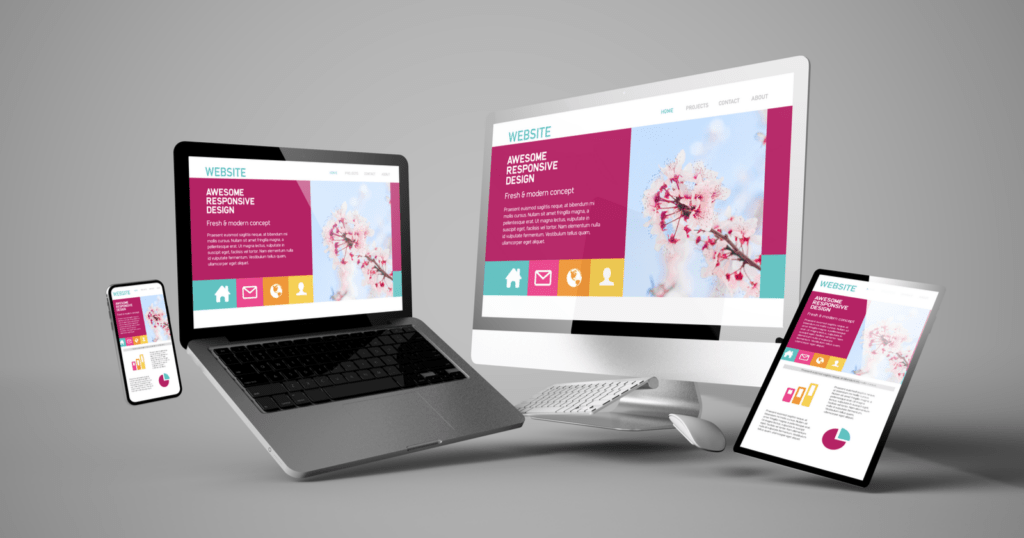Complete Website Design Services for Corporate Sites
Complete Website Design Services for Corporate Sites
Blog Article
Top Tips for Producing an Impactful Web Site Style That Transforms
To achieve this, one must take into consideration a range of elements, including understanding the target audience, focusing on individual experience, and maximizing for mobile systems. The critical use of compelling call-to-actions and a distinct visual power structure plays a vital function in guiding customers with their trip.

Understand Your Target Market
Recognizing your target market is fundamental to reliable web site design, as it lays the foundation for producing an engaging customer experience. Determining that your customers are, including their demographics, choices, and habits, makes it possible for developers to tailor the web site's content, format, and capability to meet details requirements.
Performing detailed market research study is important in this procedure. Studies, meetings, and analytics can provide beneficial insights right into user expectations and discomfort points. By assembling this information, designers can produce customer personalities that stand for different sections of the audience, making sure that design decisions are notified and appropriate.
Furthermore, understanding the target audience aids in choosing appropriate style elements such as shade systems, typography, and imagery that resonate with individuals. An internet site that speaks directly to its audience promotes a sense of connection and depend on, urging longer check outs and greater conversion prices.
Ultimately, a user-centered method to website style not just boosts customer fulfillment yet additionally sustains business objectives by driving interaction and loyalty. By focusing on the needs and choices of the target market, an internet site can successfully offer its purpose and achieve desired outcomes.
Prioritize Individual Experience
To improve the general efficiency of a web site, focusing on individual experience (UX) is necessary (Website Design). A properly designed UX ensures that site visitors can browse the website effortlessly, locate details promptly, and engage with material meaningfully. This brings about enhanced user fulfillment and higher conversion rates
Begin by implementing intuitive navigating. Menus should be logically structured, allowing customers to situate crucial areas of the site with marginal initiative. Consistency in design components, such as shade plans and fonts, fosters knowledge, which is critical for keeping individual engagement.
In addition, take into consideration the packing speed of your site. A hold-up of simply a few secs can cause considerable drop-offs, as customers are much less likely to await a slow-loading web page. Improving images and maximizing code can improve performance and preserve visitors.
Moreover, clearness in material discussion is important. Usage concise, interesting language and break up text with visuals to enhance readability. By focusing on individual experience, you not only produce a more delightful environment for visitors however additionally strengthen your brand's credibility. Eventually, a concentrate on UX is an investment in the long-term success of your internet site.
Enhance for Mobile Tools
Maximizing for smart phones is crucial in today's digital landscape, where an enhancing number of individuals access web sites with mobile phones and tablet computers. A mobile-friendly style not only improves individual experience however also plays a considerable duty in boosting search engine rankings. To attain this, it is necessary to adopt a receptive layout that instantly gets used to various screen dimensions and alignments.

Filling speed is one more crucial element; mobile customers are normally much less client and anticipate rapid access to info. By focusing on mobile optimization, you ensure that your web site continues to be affordable and properly engages a broader target market.
Use Compelling Call-to-Actions
A website's efficiency typically pivots on its ability to guide site visitors toward preferred activities, making compelling call-to-actions (CTAs) vital parts of design. CTAs work as the essential factors that route users to engage with the site, whether that implies buying, registering for best site an e-newsletter, or downloading and install a resource.
To develop efficient CTAs, quality is critical. Use concise language that clearly communicates the activity you want the customer to take.
Moreover, the layout of CTAs ought to stand out without being interfering. Employ contrasting colors and clear font styles to ensure they record interest. In addition, think about utilizing directional cues, such as arrows or images, to lead users toward these switches. By concentrating on these elements, organizations can considerably improve user engagement, driving conversions and inevitably attaining their internet site's objectives.
Concentrate On Visual Hierarchy
Reliable website layout relies greatly on a well-structured visual pecking order that overviews individuals through material perfectly. By arranging elements in a way that focuses on information, designers can boost user experience and assist in decision-making. This involves using dimension, color, contrast, and spacing purposefully to draw interest to one of the my response most vital parts of a webpage.
Using bigger typefaces for headings and subheadings establishes a clear distinction in between various sections, allowing individuals to check material effortlessly. Furthermore, employing different shades for switches and calls-to-action can catch customer focus and encourage interaction. Whitespace is one more essential part; it avoids mess and makes it possible for customers to concentrate on essential messages without diversions.
Photos and graphics need to complement the text while also adhering to the recognized pecking order, enhancing the total message (Website Design). Uniformity in layout components, such as shade systems and typography, more reinforces the aesthetic pecking order, making navigation user-friendly

Final Thought
In conclusion, efficient internet site layout requires a detailed understanding of the target audience, prioritization of user experience, and mobile optimization. Inevitably, a well-executed site design serves as a crucial element in driving user actions and attaining service objectives.
Report this page